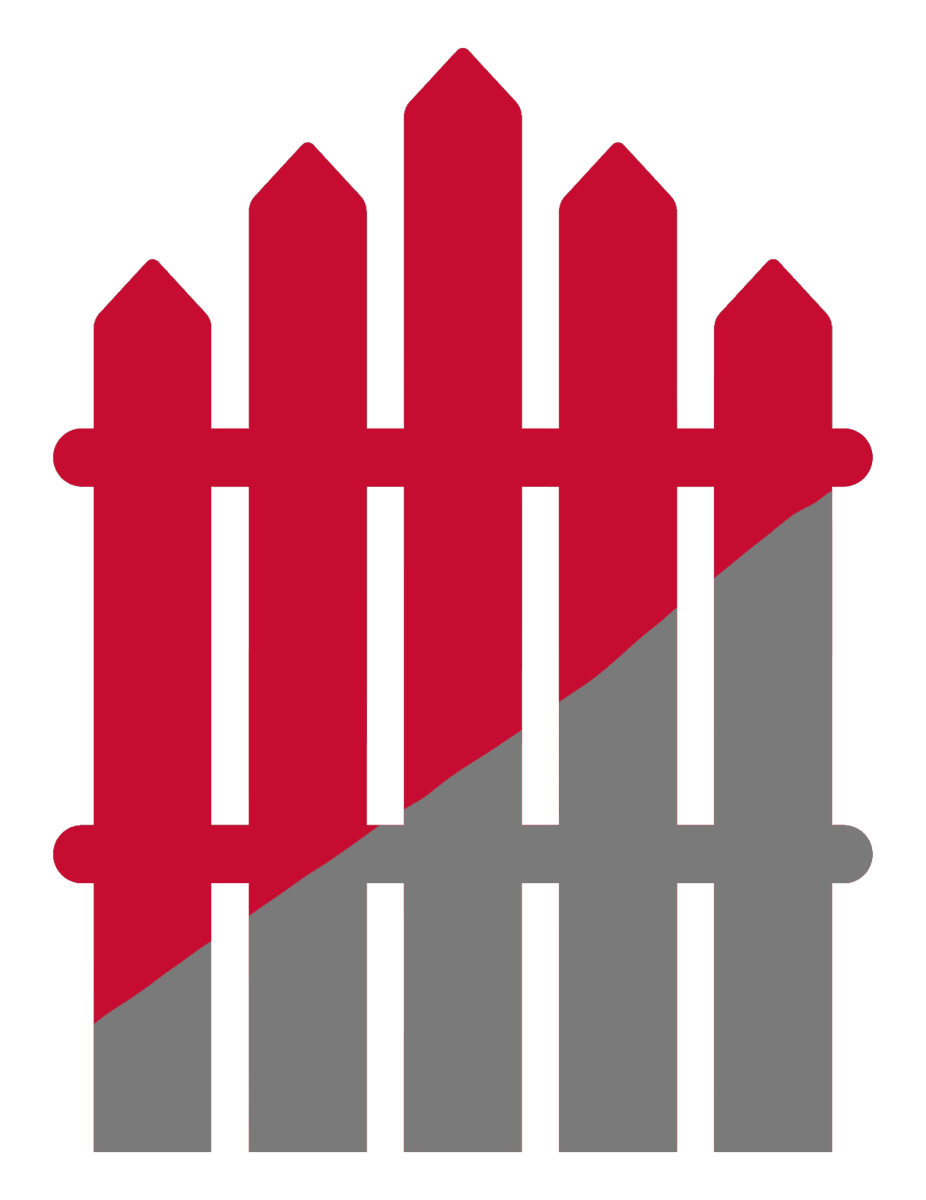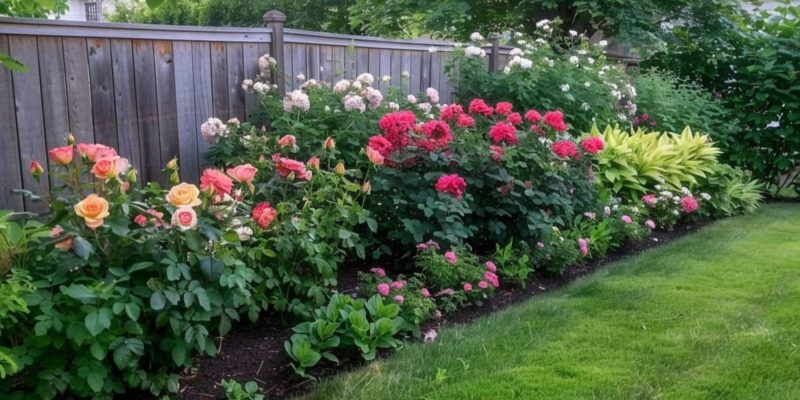Welcome to our guide on choosing the right garden fencing for enhancing privacy in your home in Rome. A well-chosen fence not only secures your personal space from prying eyes but also complements your landscape. Let’s explore how to select a fence that offers both privacy and aesthetic appeal.
The Importance of Privacy in Residential Areas
Privacy fencing is more than just a boundary around your property; it acts as a shield, keeping unwanted attention and noise at bay, allowing you and your family to enjoy your outdoor spaces in peace.
Whether you’re sunbathing, hosting a backyard barbecue, or simply relaxing with a book, a privacy fence ensures that these personal moments remain confidential and serene. By installing the right type of fence, homeowners can enhance both their security and the overall enjoyment of their home environment.
Comprehensive Guide to Privacy Fences
Types of Privacy Fences
Wood Panel Fences: These are a popular choice due to their traditional look and ability to be painted or stained to match any style. They provide a solid barrier that ensures complete privacy. Wood fences are versatile but require maintenance to avoid weather damage.
Metal Fences: For those seeking a more durable option, metal fences like wrought iron or aluminum offer longevity and strength. While they are not always the best for full privacy, designs with closely spaced bars can serve well.
Living Fences: A living fence, made up of dense shrubs or trees, can be both eco-friendly and visually appealing. Plants such as arborvitae or bamboo grow tall and thick, serving as a natural screen that also promotes local flora and fauna.
Material Considerations
Choosing the right material for your privacy fence depends on your specific needs:
- Wood is affordable and easily customizable but may require regular maintenance such as staining or sealing to prevent rot and termite damage.
- Vinyl fencing is another option that offers a similar appearance to wood but with less maintenance. It can handle the humid Georgia climate without warping or fading.
- Bamboo is ideal for a quick-growing natural barrier. However, it needs to be managed properly to avoid overgrowth.
Aesthetic and Functional Fences for Enhanced Privacy
When choosing a privacy fence for your home in Rome, it’s essential to consider both functionality and aesthetic appeal. The right fence should not only protect your privacy but also enhance the beauty of your landscape.
Integrating Aesthetics with Functionality
A privacy fence can be more than just a functional barrier; it can be a statement piece in your garden. Here are some ideas to merge aesthetics with functionality:
Lattice Fences
Lattice panels offer a delicate balance between privacy and openness. They provide enough barrier to shield your activities from outsiders while allowing light and air to pass through.
The criss-cross pattern adds a decorative touch, and it supports climbing plants…
The criss-cross pattern adds a decorative touch, and it supports climbing plants like ivy or jasmine, transforming your fence into a living green wall during the growing seasons.
Mixed Material Fences
Combining different materials can enhance both the function and appearance of your fence. For instance, a base of solid wood panels topped with a strip of lattice not only increases privacy but also adds a stylish element.
Alternatively, integrating stone columns between wooden fence panels can create a robust, elegant look that stands out in your neighborhood.
Horizontal Slat Fences
Horizontal slats have gained popularity for their modern and stylish look. They can make a small yard appear larger by drawing the eye along the length of the garden. These fences also offer solid privacy while featuring a contemporary design that complements modern architectural styles.
Color and Texture in Fence Design
The color and texture of your fence play a crucial role in its integration into your garden’s overall design:
Color Choices: Neutral colors like whites, grays, and earth tones can blend seamlessly with most landscapes. Brighter colors or stains can be used to either complement or contrast with the colors of your home and garden, adding a vibrant or warm touch to the environment.
Texture Variations: The texture of your fencing material can add visual interest and depth to your garden. Rough textures like that of untreated wood or stone can give a rustic, natural feel, while smooth, painted, or varnished surfaces can create a more refined and polished appearance.
Incorporating Decorative Elements
Adding decorative elements can elevate the look of your privacy fence:
Decorative Toppers: Adding elements such as post caps or ornamental ironwork can lend a touch of elegance to your fence. These small details can make a significant impact on the overall look of your yard.
Integrated Lighting: Incorporating lighting into your fencing not only enhances security but also adds ambiance to your outdoor space. Soft, outward-facing lights can highlight the fence’s features at night and create a welcoming atmosphere.
Artistic Inserts: Some homeowners choose to incorporate artistic elements like custom metal cut-outs or stained glass within their fence panels. These features act as a focal point and personalize the space.
By considering both aesthetic appeal and functionality, your privacy fence can serve as a beautiful and effective boundary for your property, making your outdoor living space a private, peaceful retreat.
Maximizing Small Spaces with Privacy Fences
In smaller yards, the choice of fencing can greatly impact the perception of space. A good strategy is to choose fences with horizontal patterns, which can make your garden appear broader. For tight spaces, a taller fence might be necessary to provide privacy from neighboring windows or balconies. Using lighter colors can also help make the area feel larger and more open.
NOTE
Selecting a fence for a small space is about finding the right balance between providing privacy and not feeling enclosed.
Common Issues and Solutions with Privacy Fencing
When installing privacy fences, homeowners in Rome may encounter several common issues. Understanding these problems and their solutions can help ensure that your fencing serves its purpose effectively and lasts for years.
Maintenance Challenges
Issue: Wood fences require regular maintenance, including staining or sealing, to prevent rot and termite damage.
Solution: Choose treated wood that is more resistant to pests and weather. Alternatively, consider low-maintenance materials like vinyl or composite that offer the look of wood without the upkeep.
Weather Resistance
Issue: Fences can be damaged by Georgia’s varied weather conditions, from intense sun to heavy rain.
Solution: Select materials and finishes that are weather-resistant. For example, metal fences with a powder coating can withstand sun and rain without rusting or fading.
Zoning Laws and HOA Restrictions
Issue: Local zoning laws and Homeowner Association (HOA) rules may impose restrictions on the type, height, and placement of fences.
Solution: Before installation, check with local zoning boards and HOA guidelines to ensure compliance. This prevents costly modifications or fines later on.
Privacy vs. Blocking Light
Issue: High privacy fences can sometimes block natural light, making your yard feel dark and cramped.
Solution: Opt for fence designs that allow light penetration, such as lattice sections or spaced slats, to maintain privacy without sacrificing light.
Frequently Asked Questions
How high should my privacy fence be?
Generally, a fence that is 6-8 feet tall will provide adequate privacy for most residential areas. However, check local regulations as they can vary.
What is the best material for a privacy fence in a humid climate like Rome?
Vinyl or composite materials are excellent choices for humid climates as they resist moisture and won’t warp or rot like wood.
Can I install a privacy fence by myself?
DIY installation is possible with the right tools and a bit of know-how, especially for simpler fence types like wood panels or vinyl. However, for more complex designs or materials, professional installation is recommended.
How do I maintain a living fence?
Living fences require regular pruning to maintain their shape and density. They also need appropriate soil conditions and watering to thrive.
What should I do if my fence is damaged by a storm?
Assess the damage carefully and replace any broken sections. Frequent inspections and maintenance can prevent minor damages from becoming major issues.
Conclusion
Choosing the right garden fencing for your home is crucial for maintaining privacy and enhancing the beauty of your property. By considering both the aesthetic and functional aspects of different fence types and addressing common issues effectively, you can enjoy a private, secure, and attractive outdoor space. Remember to align your choices with local regulations and your home’s architectural style to achieve the best results.

